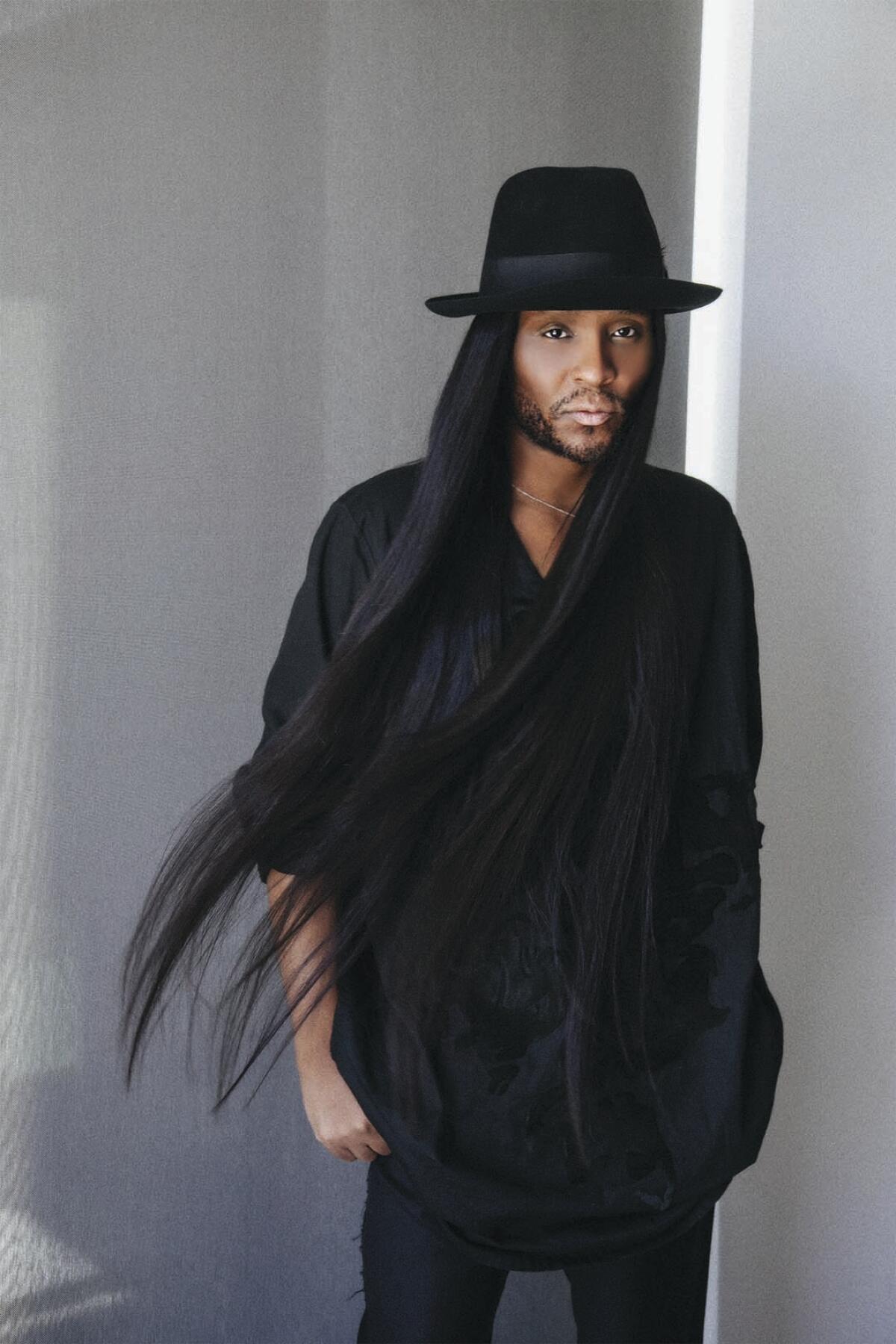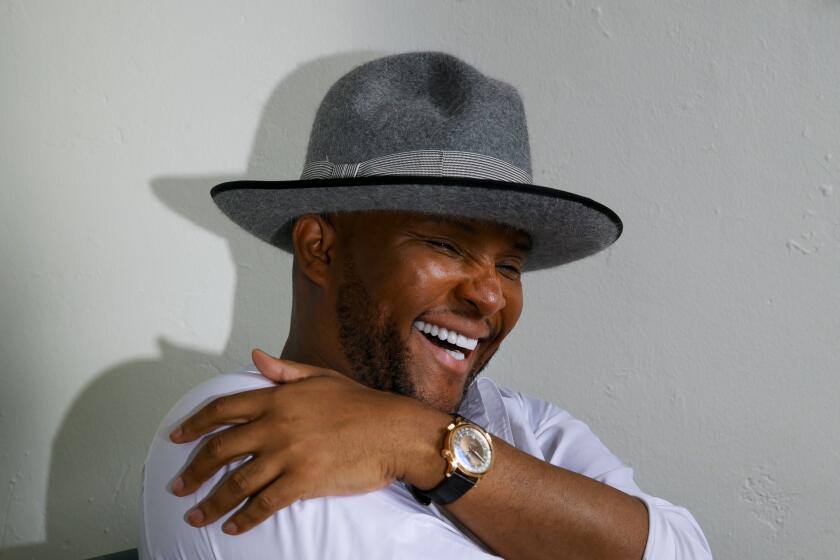Law Roach makes Zendaya sparkle. Here’s how the Image Architect curates his art

- Share via
“Malcolm & Marie” marks a few firsts for Law Roach. The movie is the first time he has received a credit for costume designing. It is also his first foray into film. His work typically appears adjacent to what’s onscreen — on red carpets, at parties and photo shoots. Just about anywhere you spot a Hollywood A-lister. To name a few: history-making actress Zendaya, her “Euphoria” costar Hunter Schafer, ’90s pop icon Celine Dion and R&B-esque darling Ariana Grande.
These milestones for Roach are either long overdue or further proof that he’s much more than a stylist to the stars. When the self-proclaimed “Image Architect” was tapped by “Malcolm & Marie” director Sam Levinson to style a dress for his close friend Zendaya, a new type of Hollywood magic emerged. The look was sharp enough to puncture the script, surfacing in dialog. “You look good tonight, baby,” Malcolm (John David Washington) shouts from the kitchen over a James Brown song.
Up next for Law Roach, self-proclaimed “Image Architect”: the Tommy X Zendaya collection, to be shown at the Apollo Theater during New York Fashion Week.
“What?” Marie (Zendaya) yells back from the bathroom, sitting on the toilet, door wide open.
The dress is a slinky, silvery Aliétte number that stirs Malcolm’s desire. Zendaya told The Times in a statement she was more than happy to work with Roach on the dress. “We wanted it to be an iconic silhouette,” she said. “Law would send us sketches, adding his own ideas and then we’d look at different fabrics and test which ones had the best texture and sheen and how they reflected under the light.”
Roach’s work involves constructing edifice. He fashions himself an “Image Architect” (a term he’s trademarked) who works more as an artist than a stylist. The Times talked to Roach about his relationship with Zendaya, why women inspire him and his practice of building images.
This conversation has been edited and condensed for clarity.
Where do you and Zendaya fall on the spectrum between friends and work? Does that shift?
Naturally, it does. At the end of the day, yeah, we’re super close. But when we’re at work, she’s the boss. I’m in the service industry, and my job is to bring her things and to help her feel the most beautiful, confident that I can. … Because when I’m working, I work for her. … But personally, I’m her big brother and whatever that entails and all that entails that’s what I am. When that’s part of the relationship that we’re dealing in.
How much did you draw from Marie’s character versus Zendaya’s own personality?
Well, she’s not Marie. She’s not Marie at all. So it all came from basically Sam [Levinson’s] inspiration and what he sent me and what he told me he wanted. I did keep in mind, of course, Zendaya’s physicality and things from my experience that I know would look good on her. But yeah, it was me reading the script and trying to figure out who Marie was as a woman: Her sex appeal and her independence and all those things went into creating the costume.
You’ve said you draw inspiration from women. What makes women so magical?
I think that being a woman is an art form. It’s funny, because I’ll sit and watch — I’ll just sit on the floor like a kid and watch my clients get their hair and makeup done. And that just transformed me back to when I used to sit and watch my grandmother roll her hair on Saturday night and do her own manicure … and pedicure. Everything was in preparation for Sunday morning. And that was just an art to me.
You’ve referred to yourself as an “Image Architect.” Describe your process and your practice. What are you thinking when you look at a piece?
I have this really crazy ability to see a piece and to also see the final product. … I can see a dress, I can see it on a client, I can see [their] hair, makeup, I can see the jewelry, I can see them on the red carpet. So I see something, and I see it all the way through to completion, which is really interesting to me. ‘Cause I always take it for granted that everybody else can see what I see, and they can’t. So, I think that’s part of the artistry.
Is that how it starts? Do you find a single piece that you like and style around that from there? What does the blueprint look like?
When I get a new client, I try to go and look at everything they’ve ever worn. I also have this ability to read body language and things through pictures. I can see a picture of someone and just be like, “Oh, [there] was something that she didn’t like about that.” And then I’ll later ask the client. And they’ll be like, “Yeah, I didn’t really like the hair.” Or, “We didn’t have time to alter the dress.” And I can always pick up on that.
So I do that first. We research and we see everything and then we separate out the things that we really love and the things that we think could be a little bit better. And then we try to start to build a blueprint, based on those things. We plug in designers and silhouettes. So we build out. Then it’s meeting the client, having the fitting and then you see, the world gets to see the end result of all that hard work. It’s never just like, “Oh, this dress may work.” It’s a little bit more detail, the way I do it.
I really — when I say “Image Architect” — I really dive into it and have a process similar to what a real architect does for a structure or building. I make my work a little bit harder, but I think it’s important. It’s important to me to showcase my clients as authentic as possible. When it really feels like it’s them dressing themselves.
More to Read
Sign up for The Wild
We’ll help you find the best places to hike, bike and run, as well as the perfect silent spots for meditation and yoga.
You may occasionally receive promotional content from the Los Angeles Times.












